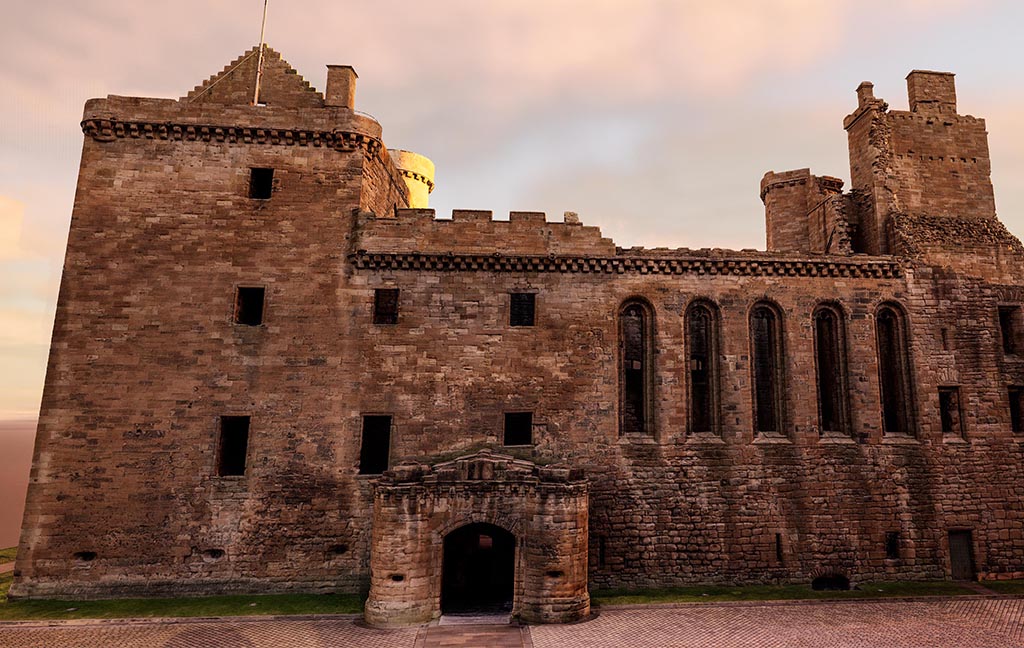This summer, we’ve reopened Linlithgow Palace to visitors. It had been closed for high-level masonry inspections since summer 2021 and it’s great to be able to welcome folks back to this much-loved historic site.
Conservation works are still ongoing at the majestic royal residence so we’ve had to make some special adaptations. There are some access restrictions in place, so the experience will be a bit different for visitors. But don’t worry! There’s still loads to see and do. You can still access roughly 75% of the site and there’s a brand new audio tour.
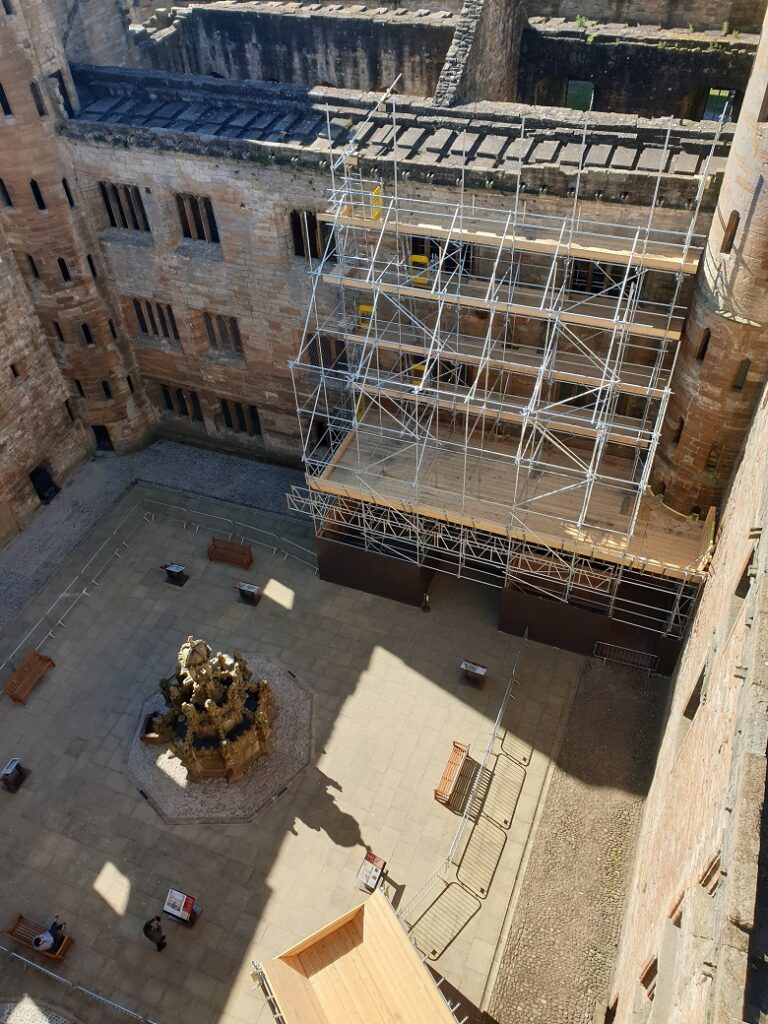
There is a bit of scaffolding and barriers on site. We know it’s not the prettiest, but it’s doing the very important job of letting the conservators work on problem areas and it’s keeping our visitors and staff safe.
If you’d like to see past the protective barriers and scaffolding and experience the site in a new way, we have good news for you! This virtual tour lets you explore the palace, including some areas that are currently out of bounds.
Sophia Mirashrafi from our Digital Documentation and Innovation team explains how her team created this spellbinding video which allows viewers to step outside their bodies and glide around one of Scotland’s best-loved historic visitor attractions.
Capturing the Palace
Since around 2007 my team has been documenting the historic environment in 3D using cutting-edge technologies. Initially we were asked to create this virtual tour when Linlithgow Palace was closed to the public ahead of its high-level masonry inspection. It has been an exciting challenge for us to repurpose the data we already had to create virtual experiences for our visitors.
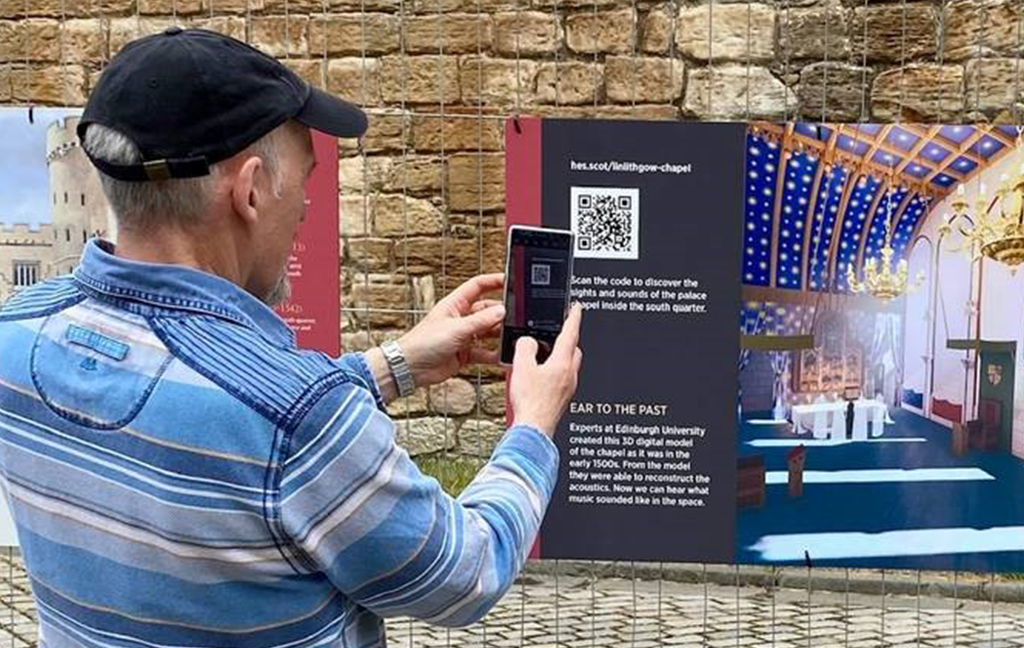
A visitor scanning the QR code to access the video when the palace was closed last year.
The story of this beautifully rendered virtual tour begins in 2018, when the palace was scanned as a part of the Rae Project. This was an enormously complex undertaking. Almost 600 terrestrial laser scans and over 2,000 UAV photographs came together to create a massively detailed meshed model of 9.2 billion triangles. That’s a lot of data!
We had all our data, but there was some more work to be done to get it in shape for visitors. By running our models through gaming software we were able to generate atmospheric renderings in a fraction of the time of older 3D software packages.
Lights…
The making of a virtual world requires the right tools to showcase the 3D assets in their best light. Unreal Engine is a powerful piece of software. It’s used to create everything from video games, architectural visualisations, animations, and even film and television. Through this software, rendering a video of a model takes less than an hour, rather than weeks.
We began by uploading a basic model of Linlithgow into the software. The photorealistic model acts as a wonderful stage for a virtual tour. However, it doesn’t look quite right yet.
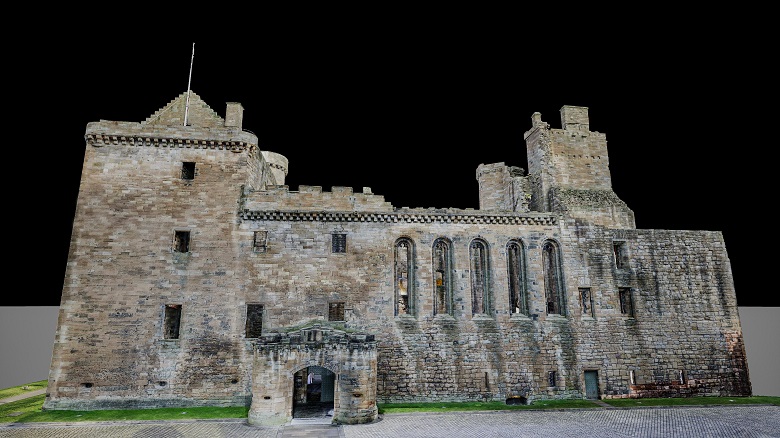
The unlit 3D model.
The real magic comes from adding a sky, light, and atmosphere. Although Linlithgow Palace is probably more used to prevailing under a steely Scottish sky, we were keen to add a bit of romance. A rising sun and dusting of ambient fog transports us to an enigmatic space!
…camera…
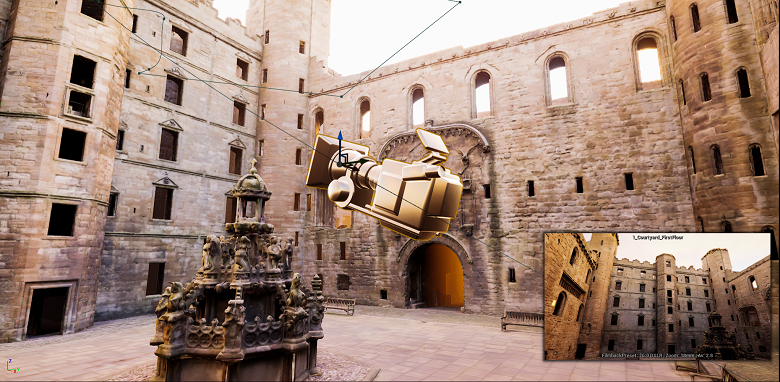
A screenshot of the camera within the software, as well as its view in the corner.
Once the palace was settled in its virtual world, the next stage was to develop a tour script and a flight path. We worked on this with colleagues in our Experience Team. They’re the ones who look after the exhibitions and displays you find at our sites, as well as our guidebooks, audio guides, information panels and lots more!
Using our script as a guide, we added a virtual camera into the picture. Within the software, we can direct the camera where to go.
Action!
Cue flying through the palace doors, panning around the courtyard and fountain before sweeping the viewer into the Great Hall to begin their journey around the site!
The virtual world allows us to not only take viewers through the well-trodden paths throughout the palace, but also to soar over the walls and dive below floors. This gives unprecedented access to areas within the palace. You can even get a glimpse into the strongroom beneath the monarch’s bedchamber, which is never accessible to the public.
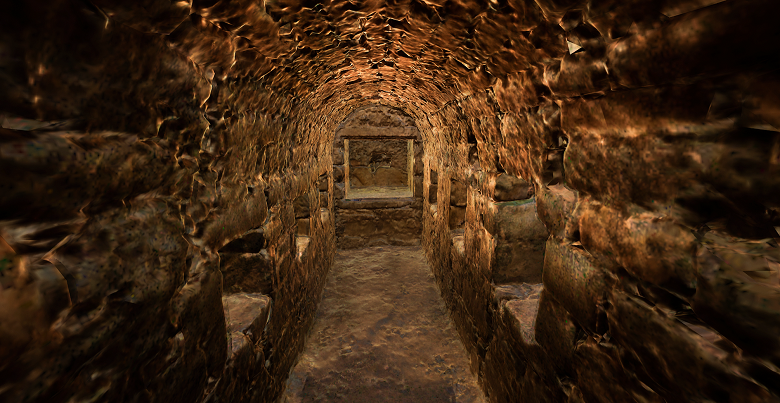
A virtual view into the strongroom under the monarch’s bedchamber
Where to next?
Take your own virtual tour! The 3D model that was used in the fly through is available to explore on our Sketchfab page. Use your left mouse click to spin the palace around, and double click to zoom in on an aspect that interests you. You can also sit back and follow the annotations to be led around different views the model.
Explore more 3D models of our sites and collections in Sketchfab.
See Linlithgow Palace for real! The palace has reopened. Book your tickets now to explore it yourself. Or come along to Spectacular Jousting on Linlithgow Peel on 1 and 2 July 2023.

